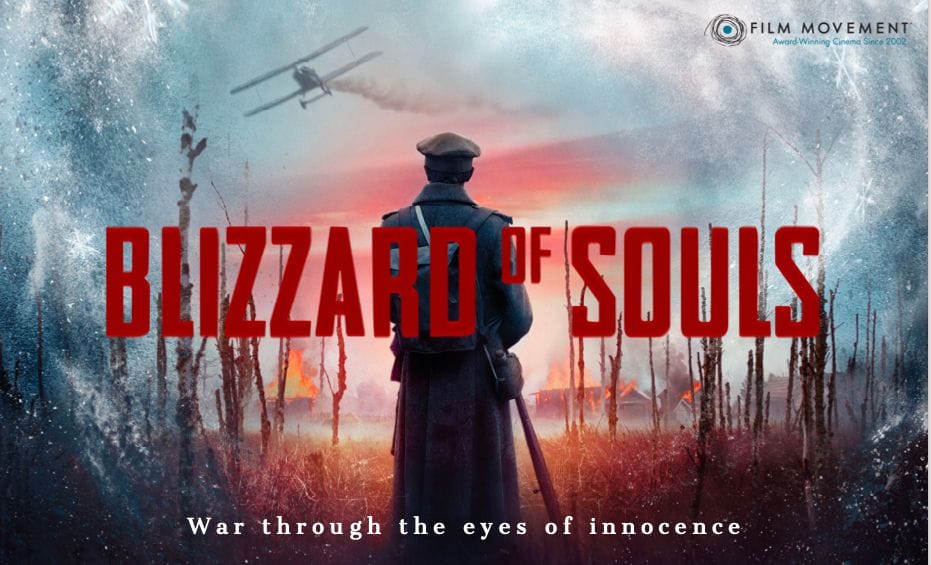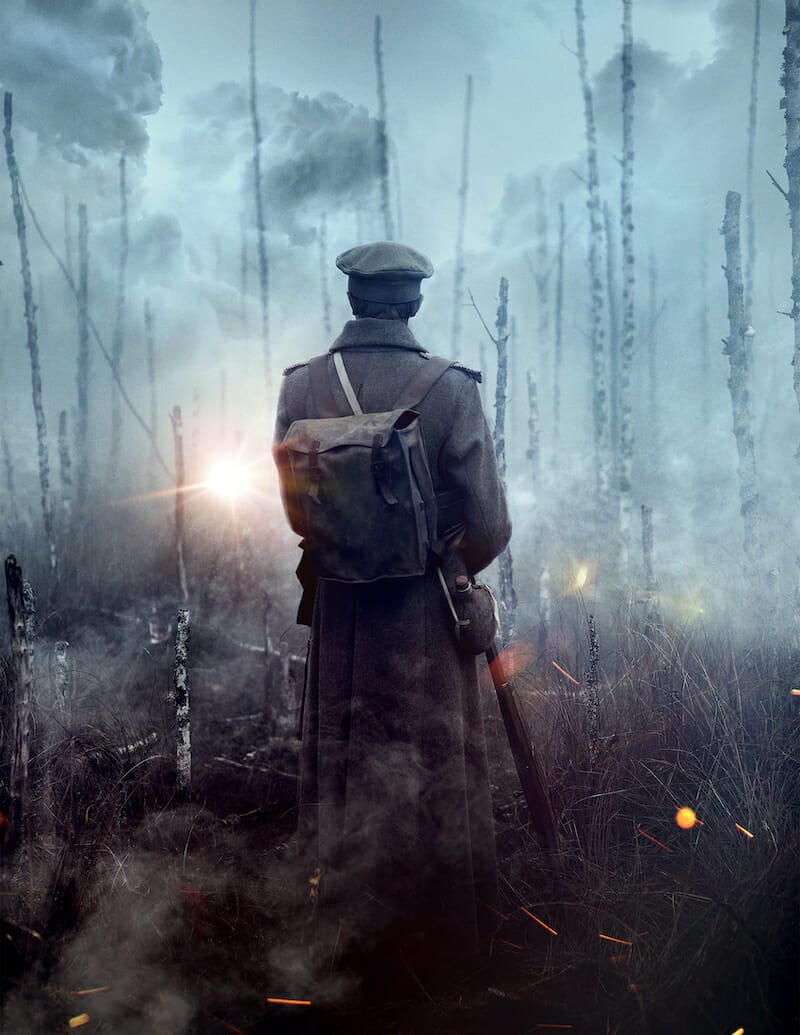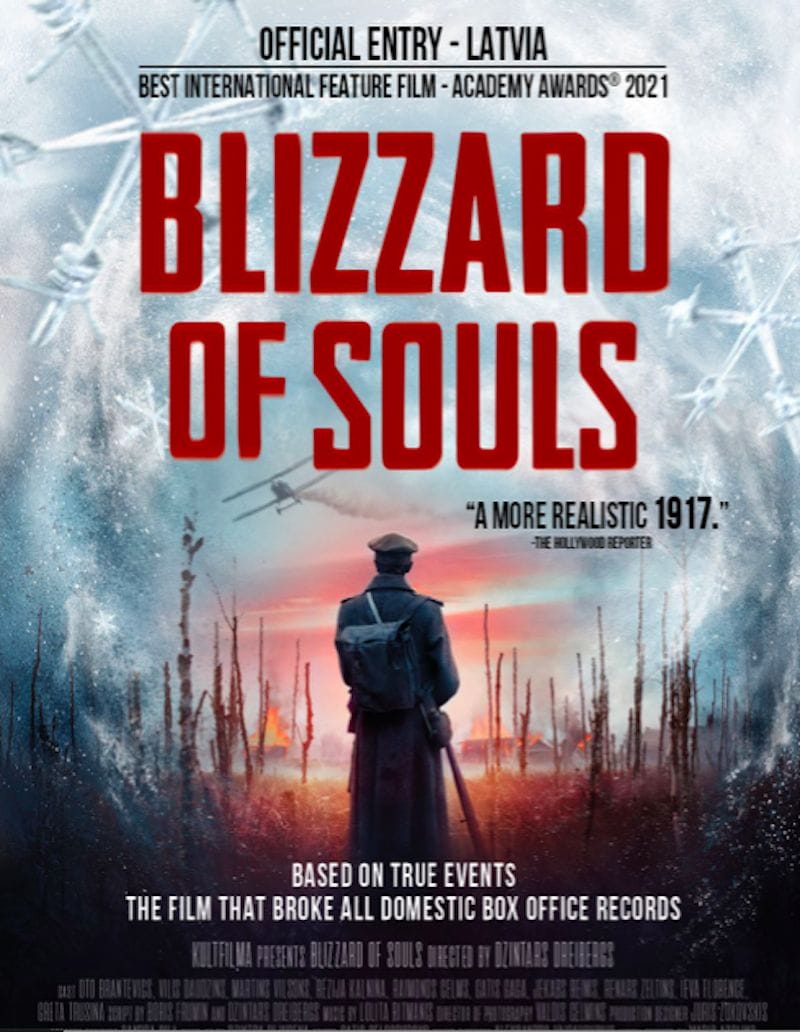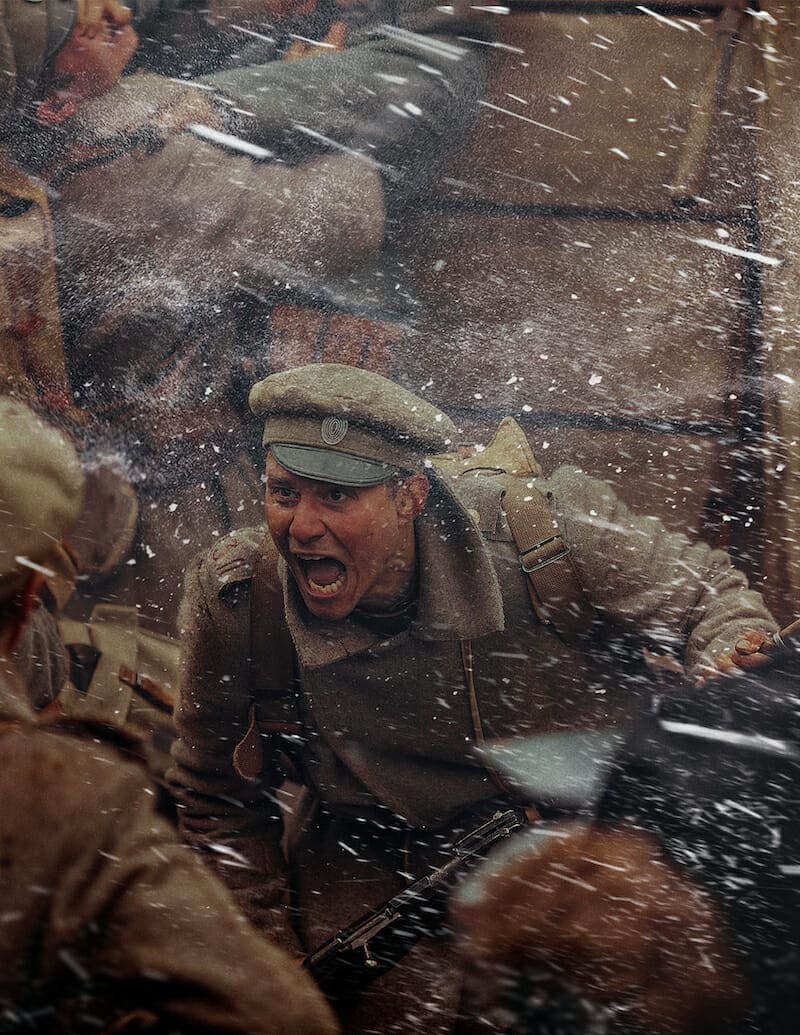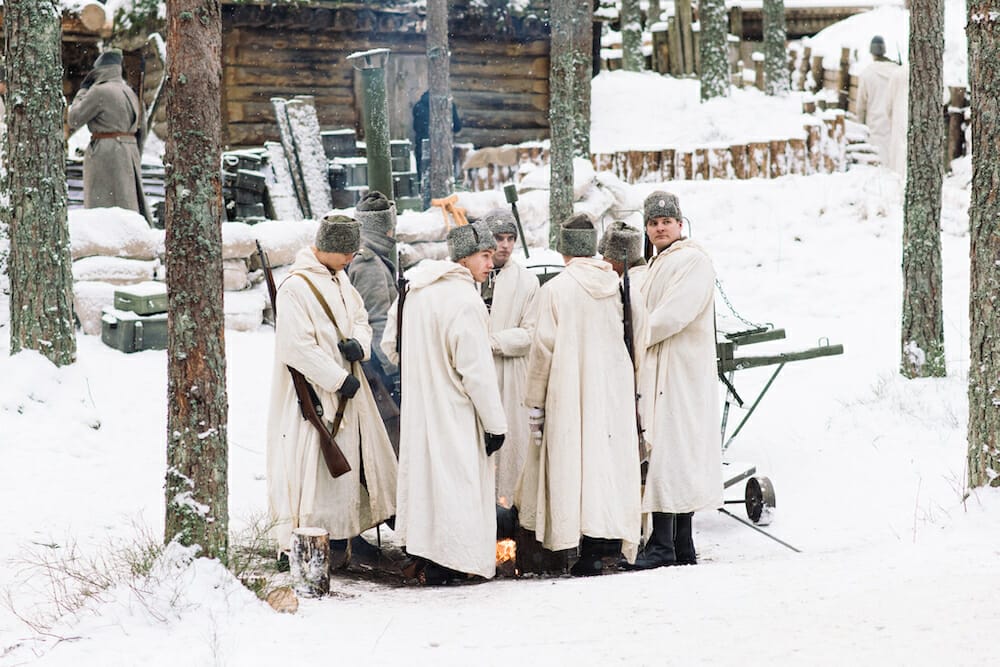Editor’s Note: Picture This Post recently interviewed the film composer, Lolita Ritmanis. Read the related article—
LOLITA RITMANIS Film Composer Interview — Award-Winning Composer Champions Gender Parity
The first time the camera goes almost level with the snowy terrain at seeming eye level, it’s difficult to see beyond the ethereal bluish white of the landscape. Long into the story, when that snow drenched field is again the scene of the action, it’s painfully clear what we are looking at. Those aren’t just little mounds of unspoiled snow. They cover body after body of fallen soldier—perhaps the namesake Blizzard of Souls. As if Director of Photography Valdis Celmiņš wants to make sure we aren’t confused about this, the camera view lingers longer on a stiff frozen hand emerging from the snow and ice. Meanwhile, the score by Latvian-American composer Lolita Ritmanis emotes both the gravity of the moment, and the swell of another marker in this epic tale.
It is World War I, and the soldier who is at the center of this story, Arthur (played by first-time actor Oto Brantevics) is at that same dispirited moment of disillusion in war and its purpose that spawned the DaDa movement in art. We’ve been with him since he was sweet sixteen, happily cuddling at his mother’s breast before circumstance catapulted him into the life of a soldier.
We watch Arthur morph from soft boy to grizzled man. We are there as he learns to pierce his opponent with a bayonet, and as he learns to shoot, duck, cover and carry on despite bullets and bombs exploding in his midst. He is wounded, and wounded again and again. He goes to battle after battle and year after year—gas masks, grabbing better boots from the fallen soldiers, or trying to rest in a hospital filled with amputees screaming through their nightmares for their missing limbs. The only thing that changes is who Arthur is fighting for or against--Germans, Tsar, or Soviets—and ultimately, just for the ability to quietly go home and watch his garden grow.
Blizzard of Souls Gives a Primer on Latvia’s History
Based on a novel by Latvian writer Aleksandrs Grins, the arc of this epic, tells the tale not just of one boy-to-man soldier but also how the modern Latvian nation came to be, a prequel perhaps to the Latvian chapter in the Singing Revolution.
The camera lens seems to have a particularly loving eye to capture the beauty of the landscape outside of war, in this writer’s view. One can imagine the meticulous planning that went into seizing the light and the trees’ fresh chutes of light greens exploding in the very first hours of Spring, and of composer Ritmanis sparking us with just the right notes of joy to allow us to momentarily forget, just like Arthur, the drear of war. You too might anticipate that en route to the Oscars—the first Latvian film to make that journey—Blizzard of Souls will especially tickle the fancy of many a world traveler imprisoned by the pandemic.
Blizzard of Souls is especially recommended to history buffs and lovers of historical fiction. Though there is no shirking from showing the horrors of war in all its permutations, the film is devoid of gratuitous violence, in this writer’s view.
RECOMMENDED
Nominate this for The Picture This Post BEST OF 2021???
Click Readers' Choice
Want to see who won the Picture This Post READERS’ CHOICE competition last year?
WATCH THIS SHORT VIDEO—
CAST:
Oto Brantevics Raimonds Celms Martins Vilsons Jekabs Reinis Gatis Gaga Renars Zeltins Vilis Daudzins Greta Trusina Ieva Florence Rezija Kalnina
CREATIVE TEAM:
Script: Boriss Frumins and Dzintars Dreibergs
Director: Dzintars Dreibergs
Director of Photography: Valdis Celmiņš
Music: Lolita Ritmanis
For more information on the film and upcoming screenings visit the Blizzard of Souls website.
Images courtesy of Blizzard of Souls.

About the Author: Amy Munice
Amy Munice is Editor-in-Chief and Co-Publisher of Picture This Post. She covers books, dance, film, theater, music, museums and travel. Prior to founding Picture This Post, Amy was a freelance writer and global PR specialist for decades—writing and ghostwriting thousands of articles and promotional communications on a wide range of technical and not-so-technical topics.

